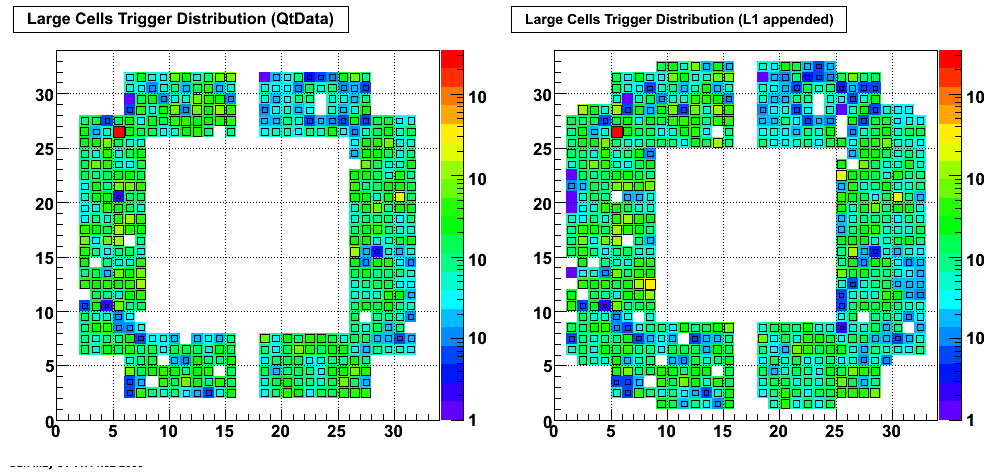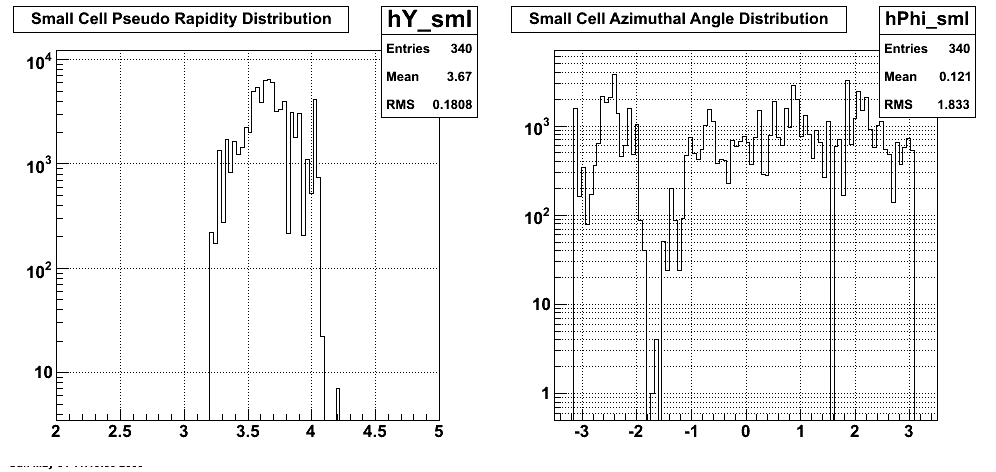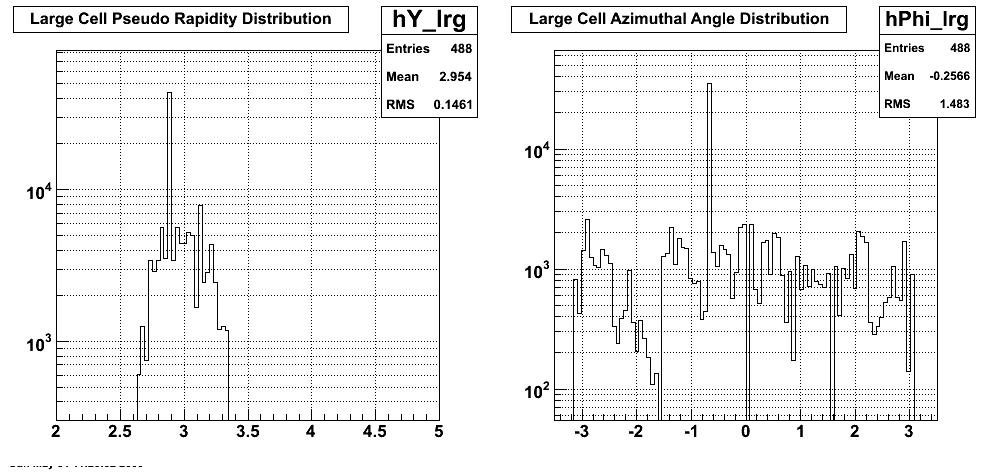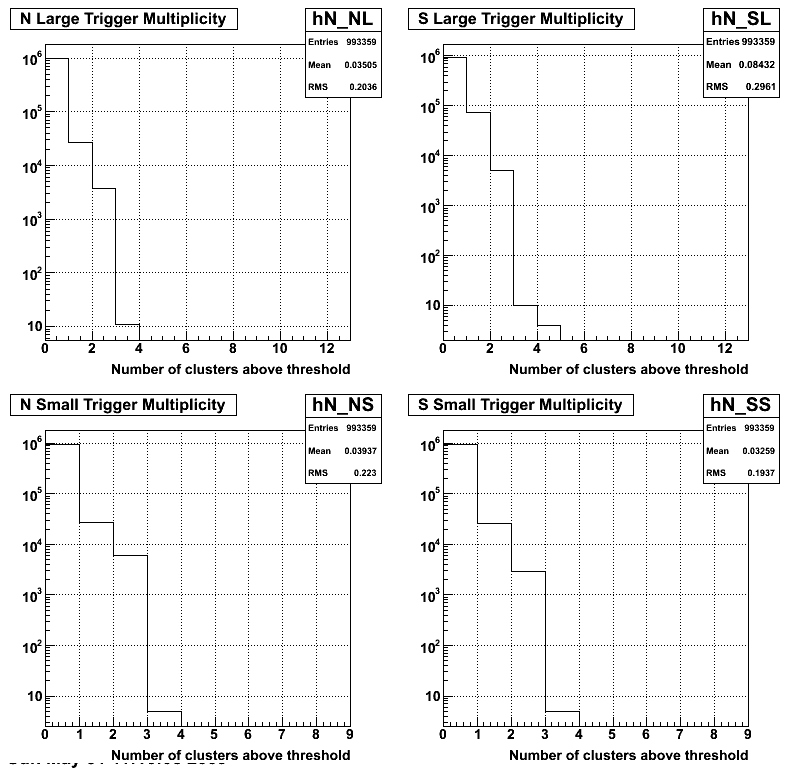- leun's home page
- Posts
- 2013
- 2012
- December (2)
- October (3)
- September (2)
- August (1)
- July (4)
- June (4)
- May (2)
- April (3)
- March (5)
- February (5)
- January (5)
- 2011
- December (3)
- November (3)
- September (5)
- August (2)
- July (2)
- June (3)
- May (4)
- April (4)
- March (2)
- February (4)
- January (2)
- 2010
- December (2)
- November (3)
- October (3)
- September (5)
- August (6)
- July (2)
- June (4)
- May (3)
- April (4)
- March (4)
- February (2)
- January (4)
- 2009
- 2008
- October (1)
- My blog
- Post new blog entry
- All blogs
run10151005
Run 10151005 (5/31)
The first 1,000,000 events from this run are analyzed. Configuration was "production2009_200Gev_Single / Physics"
The clusters are generated from Qtdata. These clusters differ from the "appended/internal" L1 DSM input clusters in two aspects. 1. Qt8 sums are NOT truncated. 2. The perimeter high towers are ignored according to Eleanor's table.
Total of 40 clusters, one for each Qt32 board, are compared to the threshold.
LED suppression is done by looking at the number of channels with ADC>10, and cutting at 800.
Number of trigger breakdown per module based on software-appended L1 input.
North Large: Total 41487 triggers, top 5 cells produced 16% of the NL triggers.
South Large: Total 97661 triggers, top 5 cells produced 42% of the SL triggers.
North Small: Total 40177 triggers, top 5 cells produced 24% of the NS triggers.
South Small: Total 38891 triggers, top 5 cells produced 14% of the SS triggers.
Overall, 63.77% of the trigger came from large cells.
For the following plots, the origin is South Up.




Cluster sum distribution. (after low 5 bit suppression)

Trigger multiplicity

Pseudo Rapidity vs. Number of Triggers
Attached spreadsheets show number of triggers, pseudo-rapidity, and phi for each cell. There is one for Qtdata based triggers, and another for L1 based triggers.
- leun's blog
- Login or register to post comments
